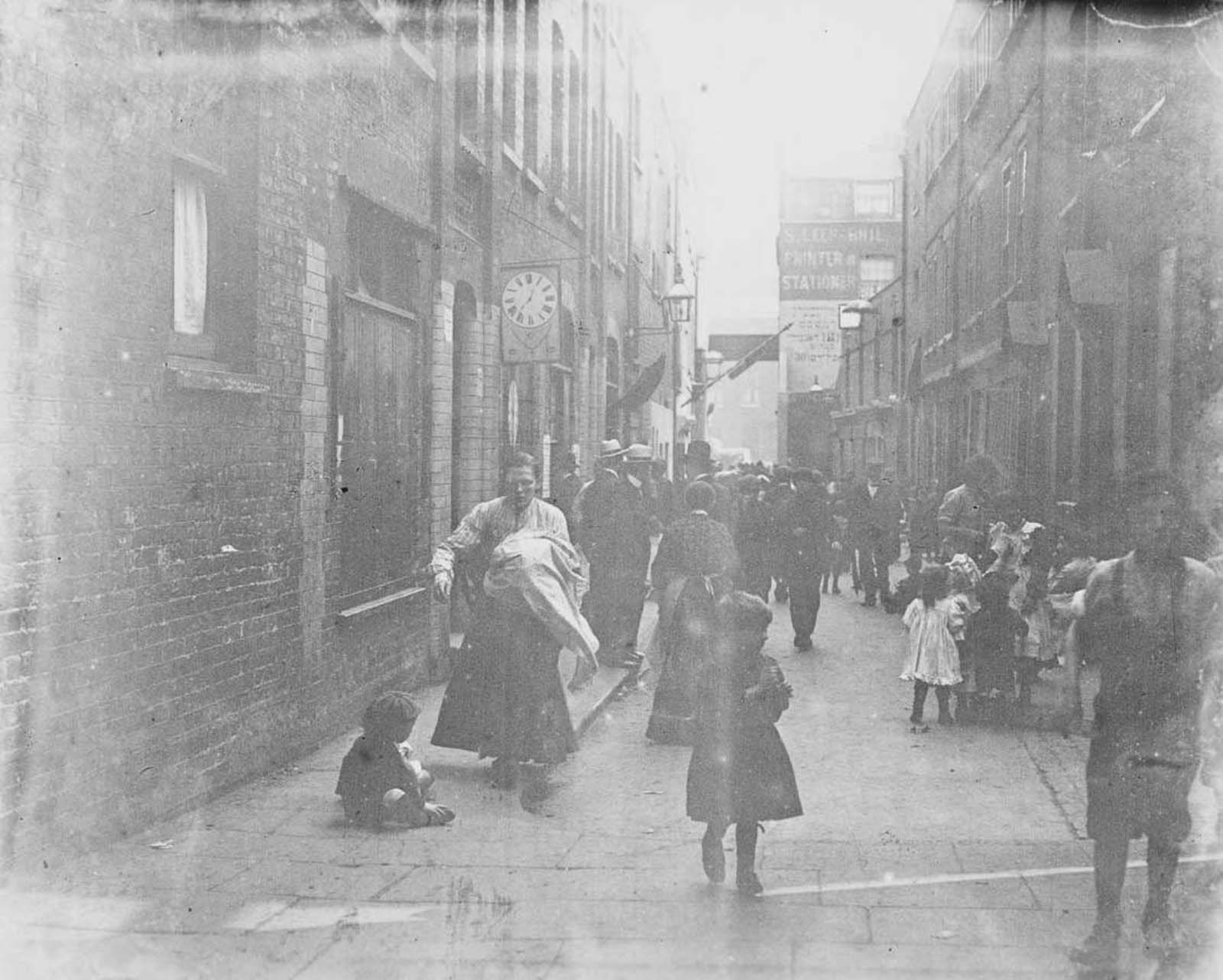
An alley on London’s East End, 1902.
Not many people know that the famous American author Jack London was also a skilled documentary photographer and photojournalist.
He took thousands of pictures over the years from the slums of London’s East End to the islands of the South Pacific.
In 1902 Jack London visited his namesake city London where he took pictures of its people and their everyday life. In the book “The People of the Abyss”, London describes this first-hand account by living in the East End (including the Whitechapel District) for several months, sometimes staying in workhouses or sleeping on the streets.
The conditions he experienced and wrote about were the same as those endured by an estimated 500,000 of the contemporary London poor.
Even before, Jack London had talked about a book on the London slums with George Brett, one of his publishers.
Thus, the writer knew what he was ought to expect ‘down there’: “He meant to expose the underside of imperialism, the degradation of the workers…“. The “evolutionary Socialist” wanted to find “the Black Hole of capitalism”.
With this preconceived vision in his mind, he disguised himself as an American sailor who had lost his ship and went into the East End taking pictures and experiencing their life. To be more precise, he wandered about Whitechapel, Hoxton, Spitalfields, Bethnal Green, and Wapping to the East India Docks.
Jack London disguised as one of the working-class poor and pretended to be one of them, which made it easier for him to get to know the conditions of their everyday life.
One of the worst experiences he makes is in a workhouse, i.e. a house in which people who are unable to support themselves could sleep, eat and work.
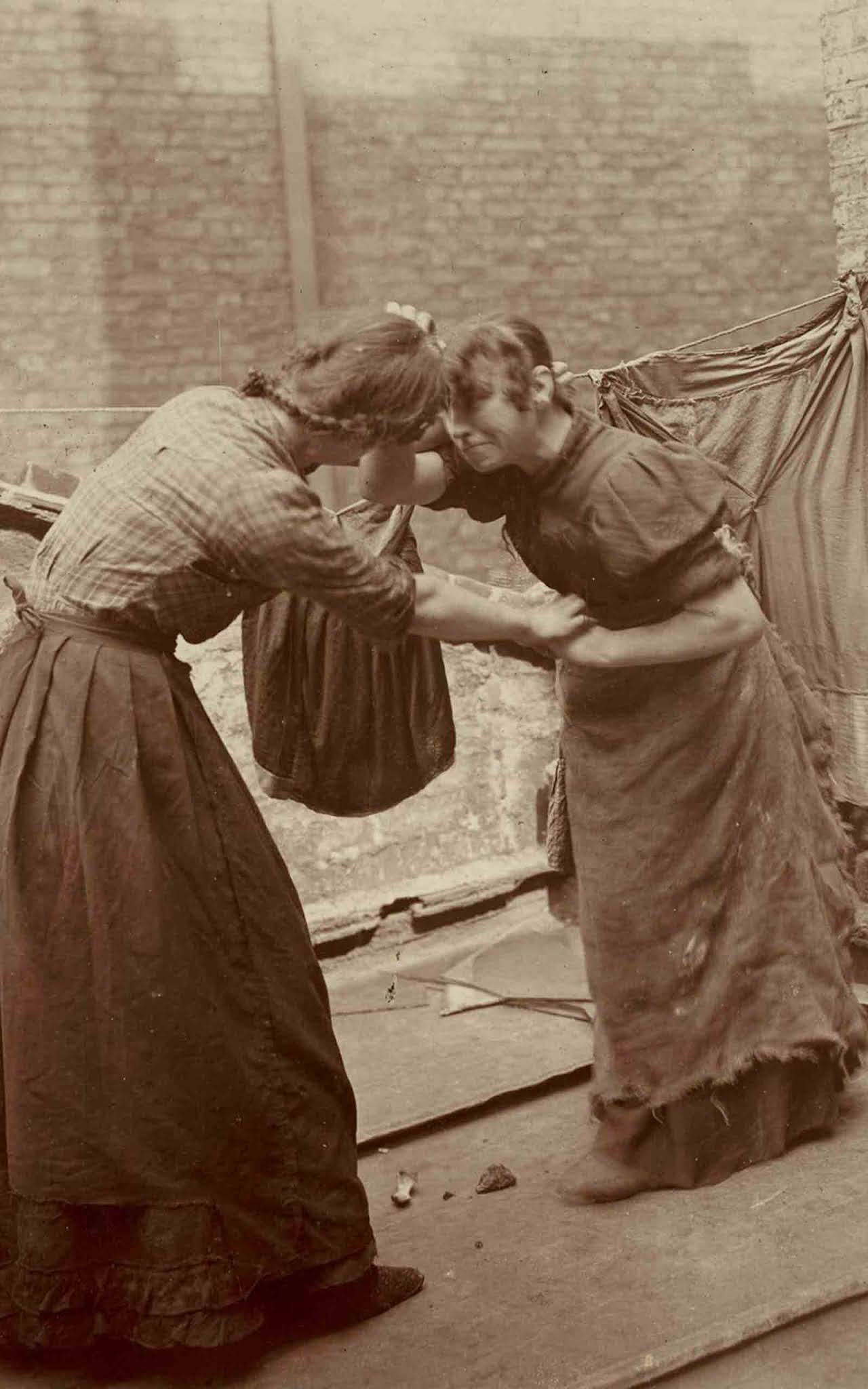
Drunken women fighting on a rooftop.
The conditions in these institutions were abominably humiliating and the diet was terrible. Apart from the homeless, he particularly depicts the old people and those suffering from disease or any disability.
These people are devoid of any chance for a job. Thus, more often than not, the only thing left for them is life in the streets and starvation.
In his 1903 “The People of the Abyss”, the American gives this description of the poor Londoners: “the air he breathes, and from which he never escapes, is sufficient to weaken him mentally and physically, so that he becomes unable to compete with the fresh virile life from the country hastening on to London Town…
It is incontrovertible that the children grow up into rotten adults, without virility or stamina, a weak-kneed, narrow-chested, listless breed, that crumples up and goes down in the brute struggle for life with the invading hordes from the country.”
Round About a Pound a Week, a report by the Fabian Society between 1909 and 1913, describes the lives of the “respectable poor”; one in five children died in their first year, and hunger, illness, and colds were the norm.
A 1909 report of the Poor Law Commission found that one-third of the East End’s 900,000 strong population lived in conditions of extreme poverty.
The report also detailed the squalor of conditions in these areas, with an average of 25 houses sharing everyone lavatory and fresh-water tap between them.
One response to a dire lack of sanitation in London’s poorest areas was the provision of communal washhouses for bathing and clothes-washing; an average of 60,000 people each week used the 50 such bathhouses which existed across the city in 1910.
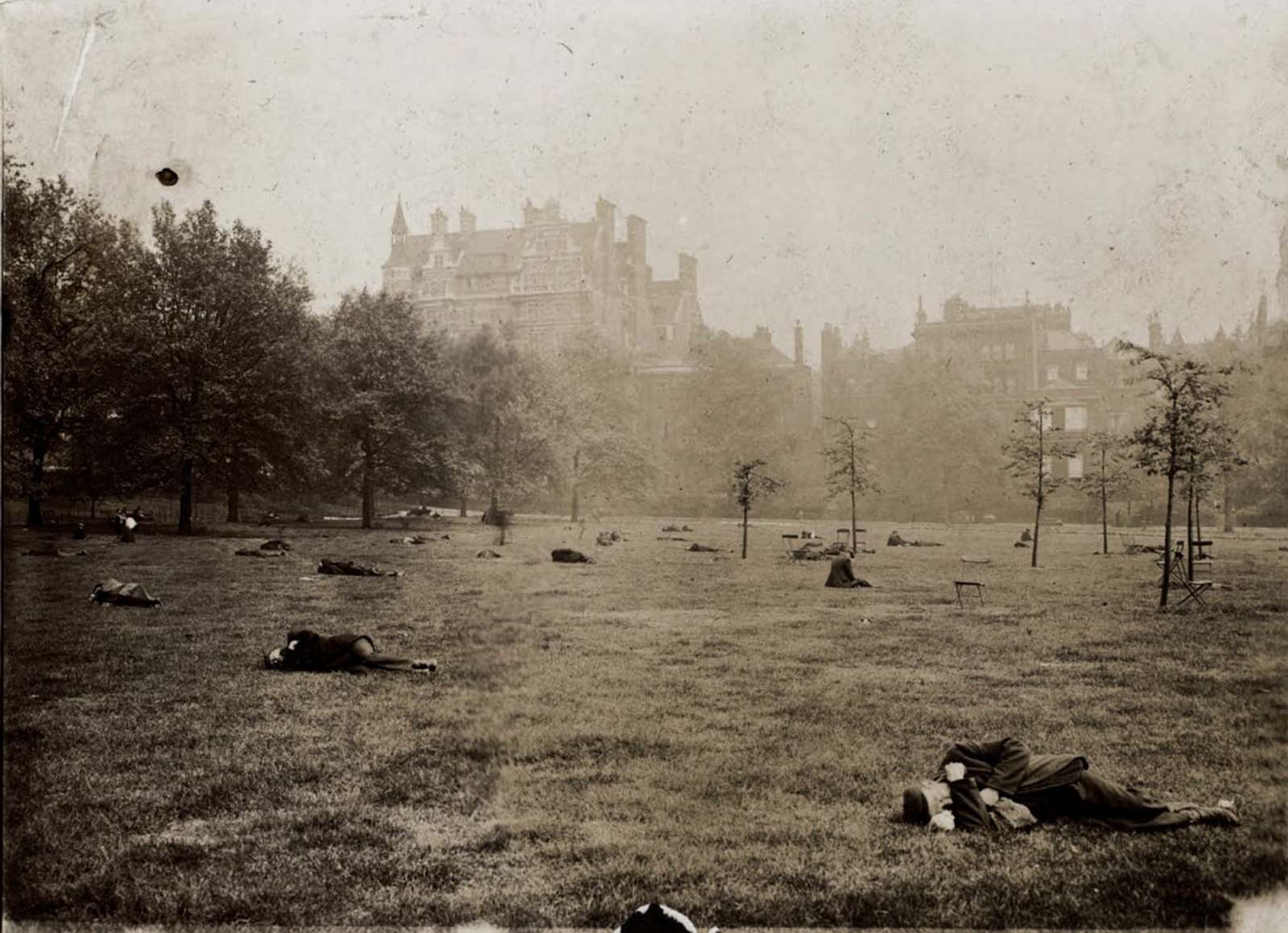
Men sleeping in Green Park.
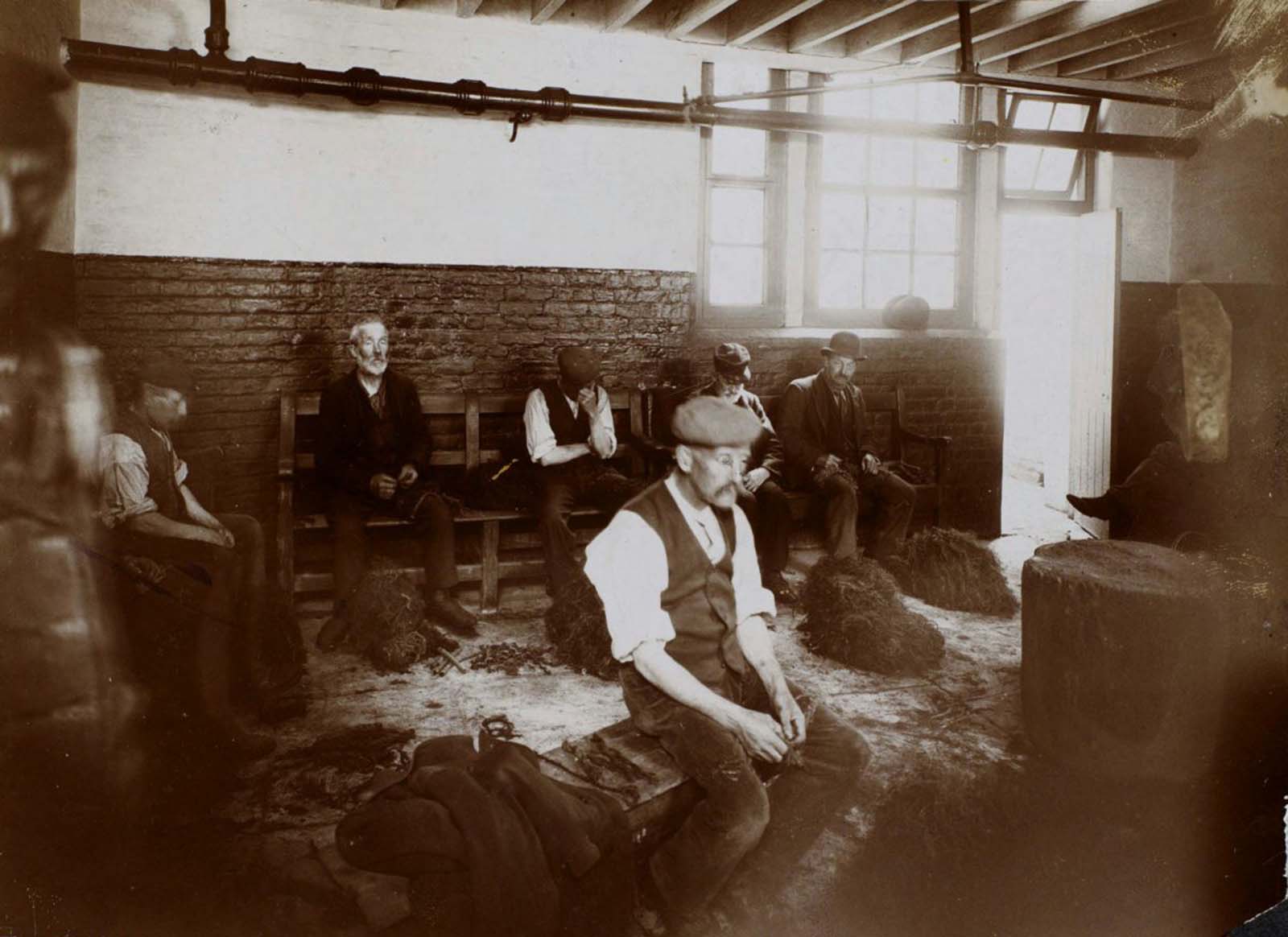
Men working by picking oakum.

The junction of Commercial Street and Brushfield Street.

Homeless people in Itchy Park, Spitalfields
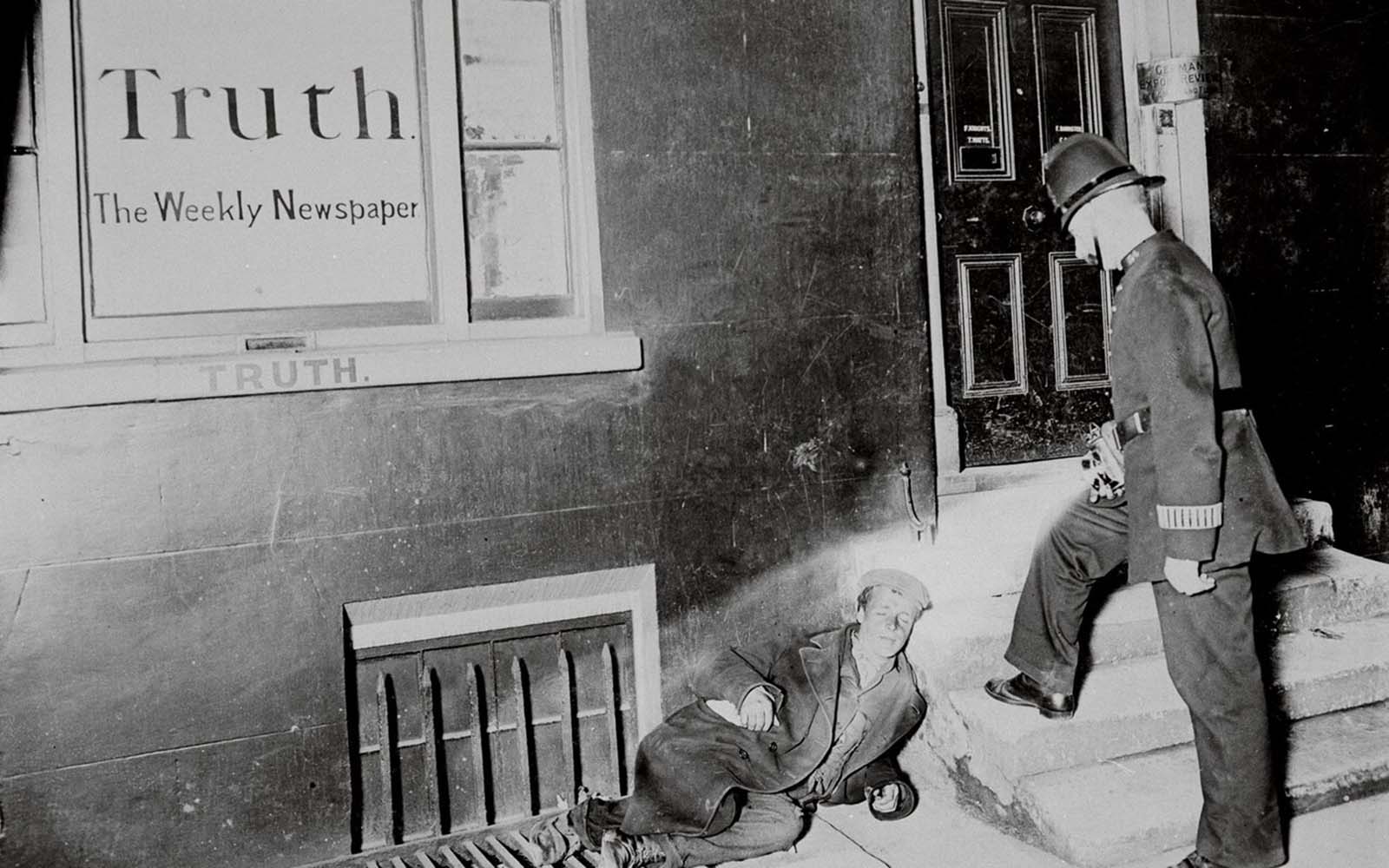
A policeman inspects a man sleeping in the street.
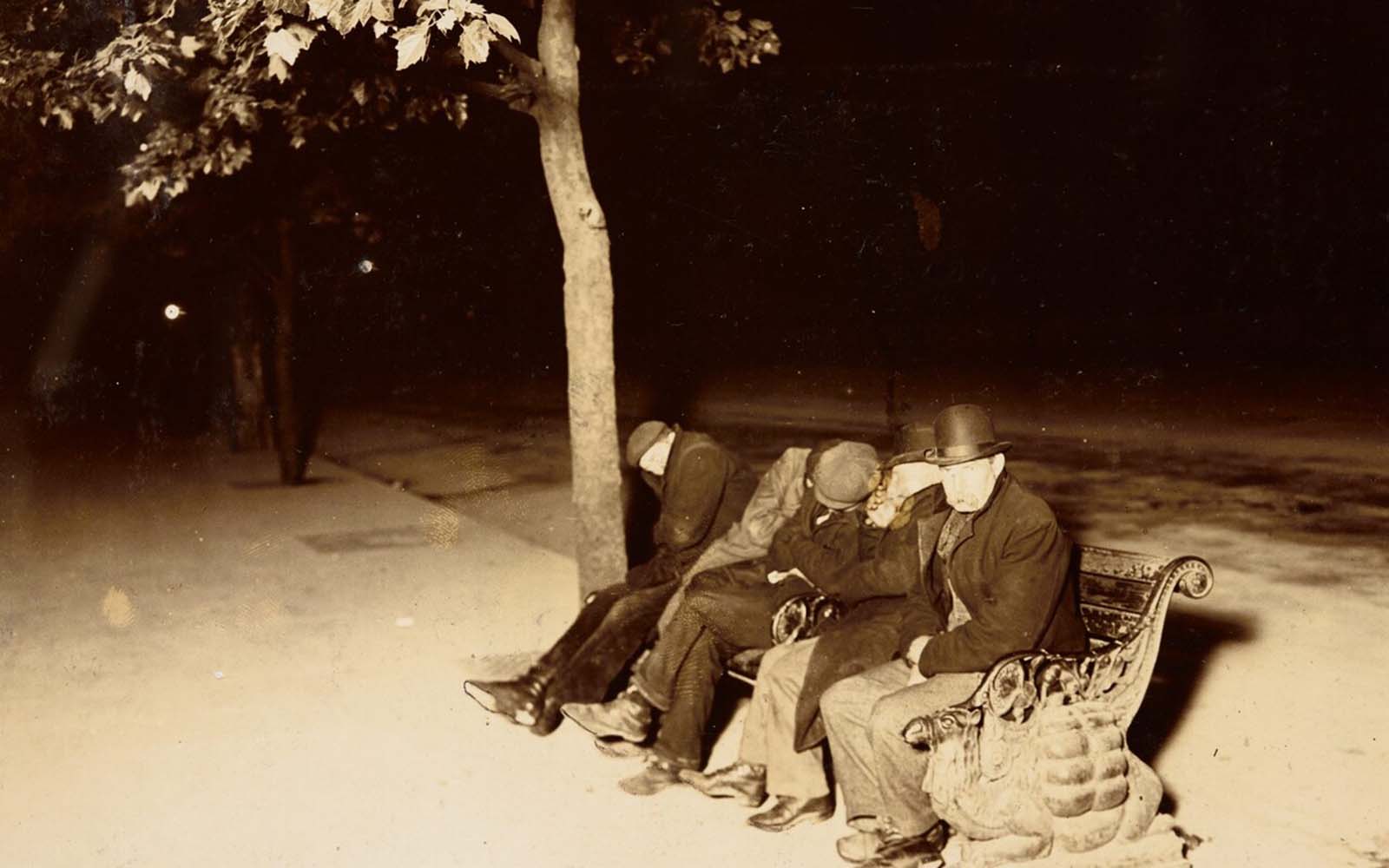
Men spending the night outdoors huddle together for warmth.
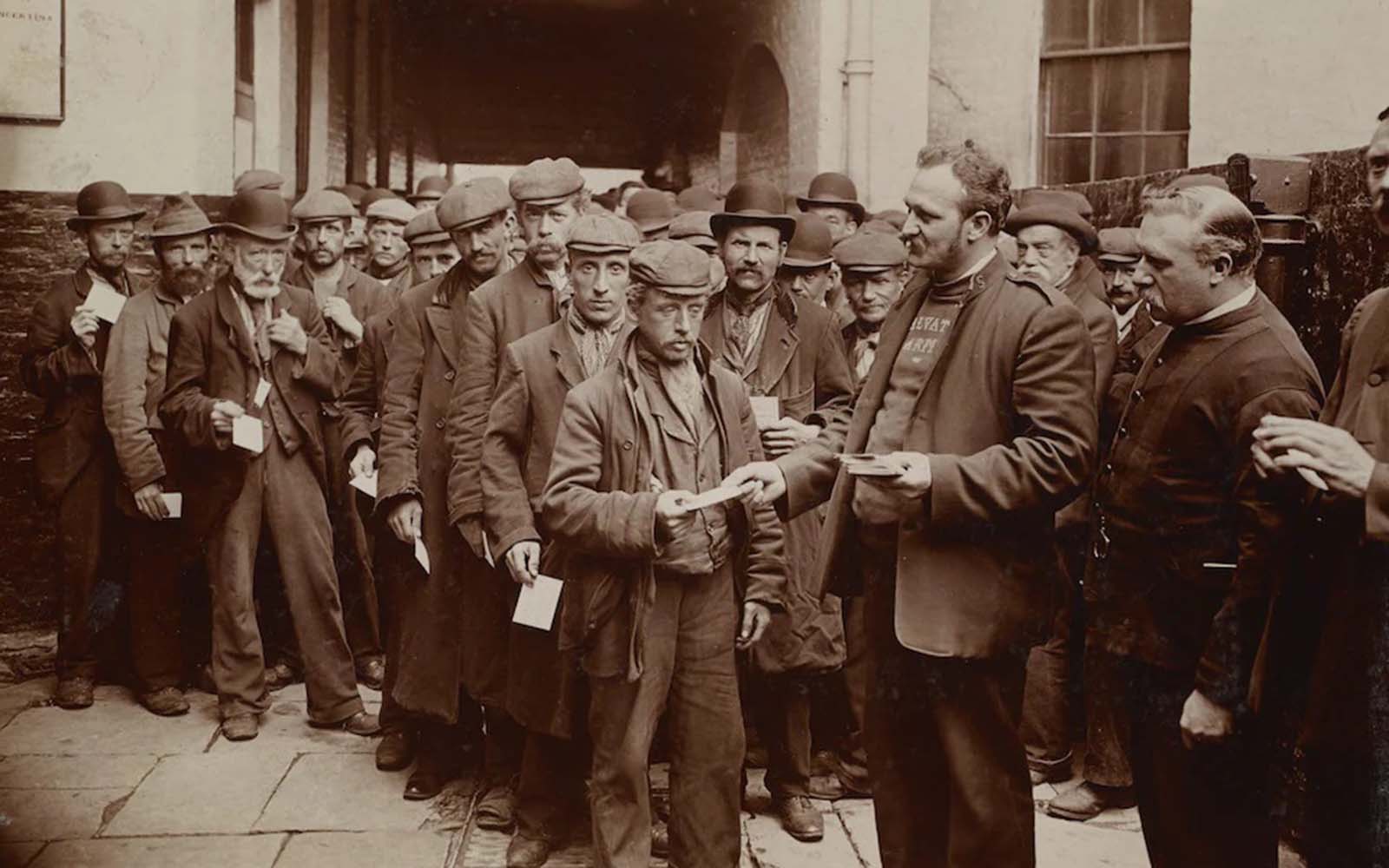
Men queue for a ticketed Salvation Army breakfast.
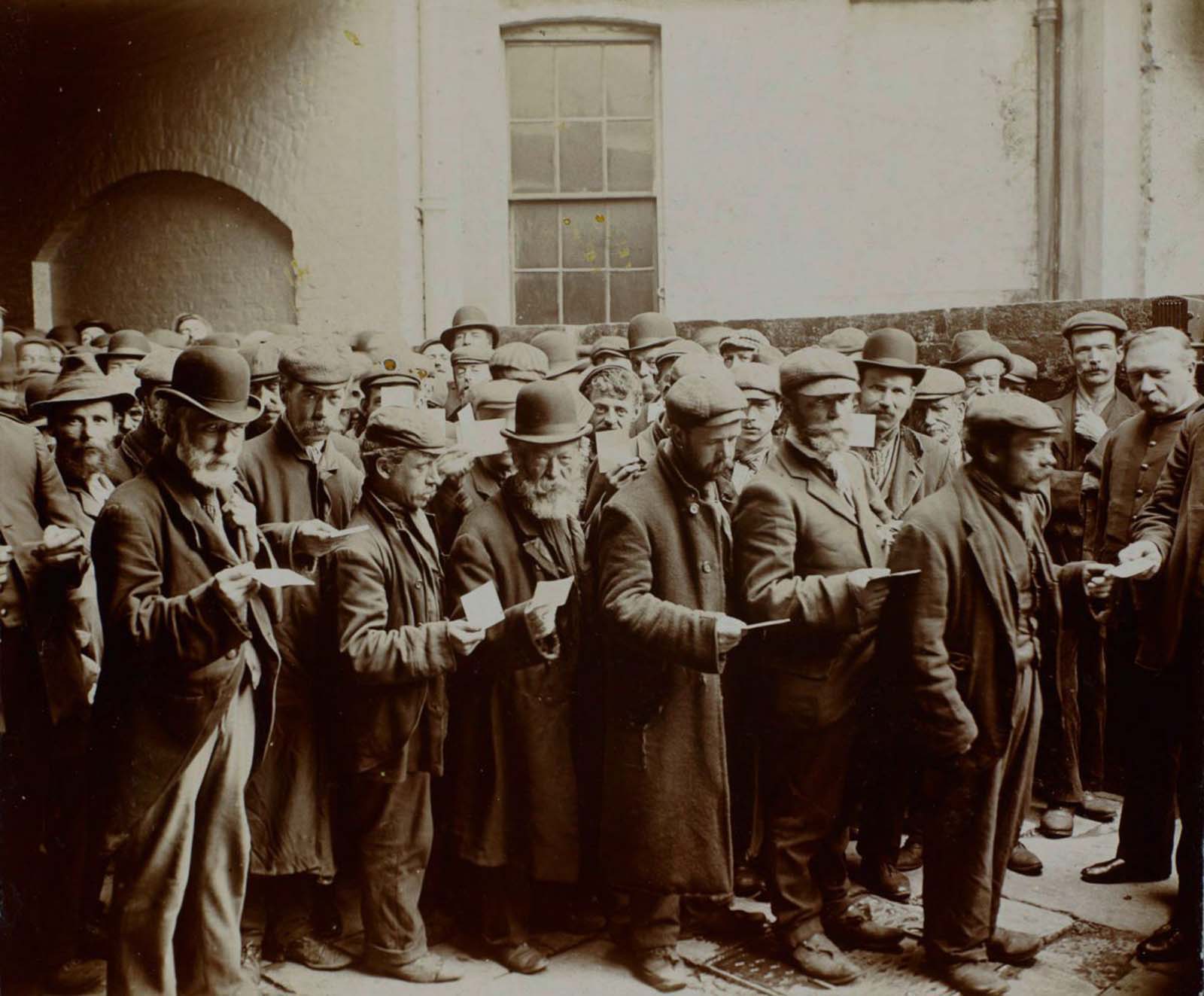
The courtyard of Salvation Army barracks.

A maidservant in East End.
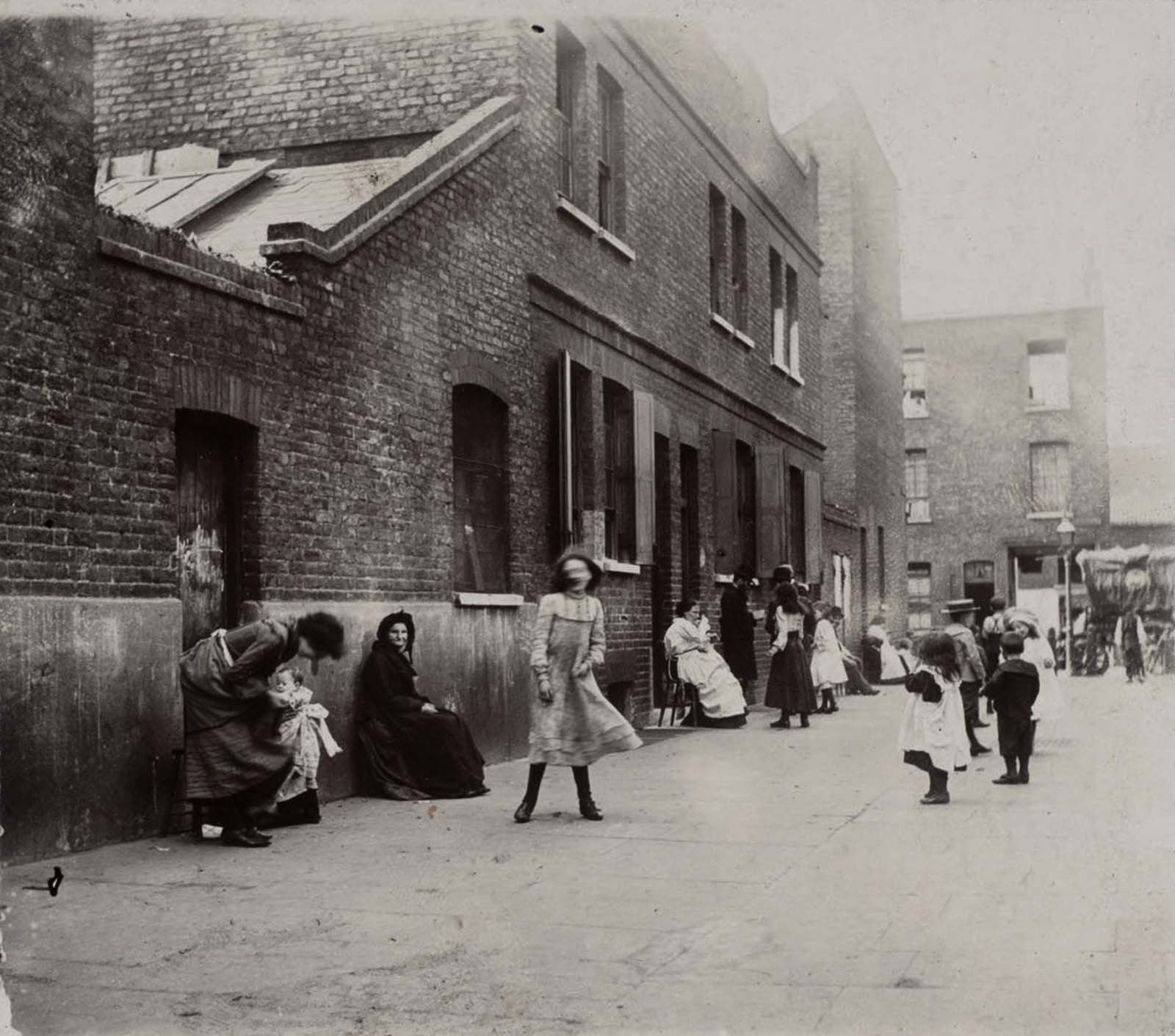
Whitechapel on a bank holiday.
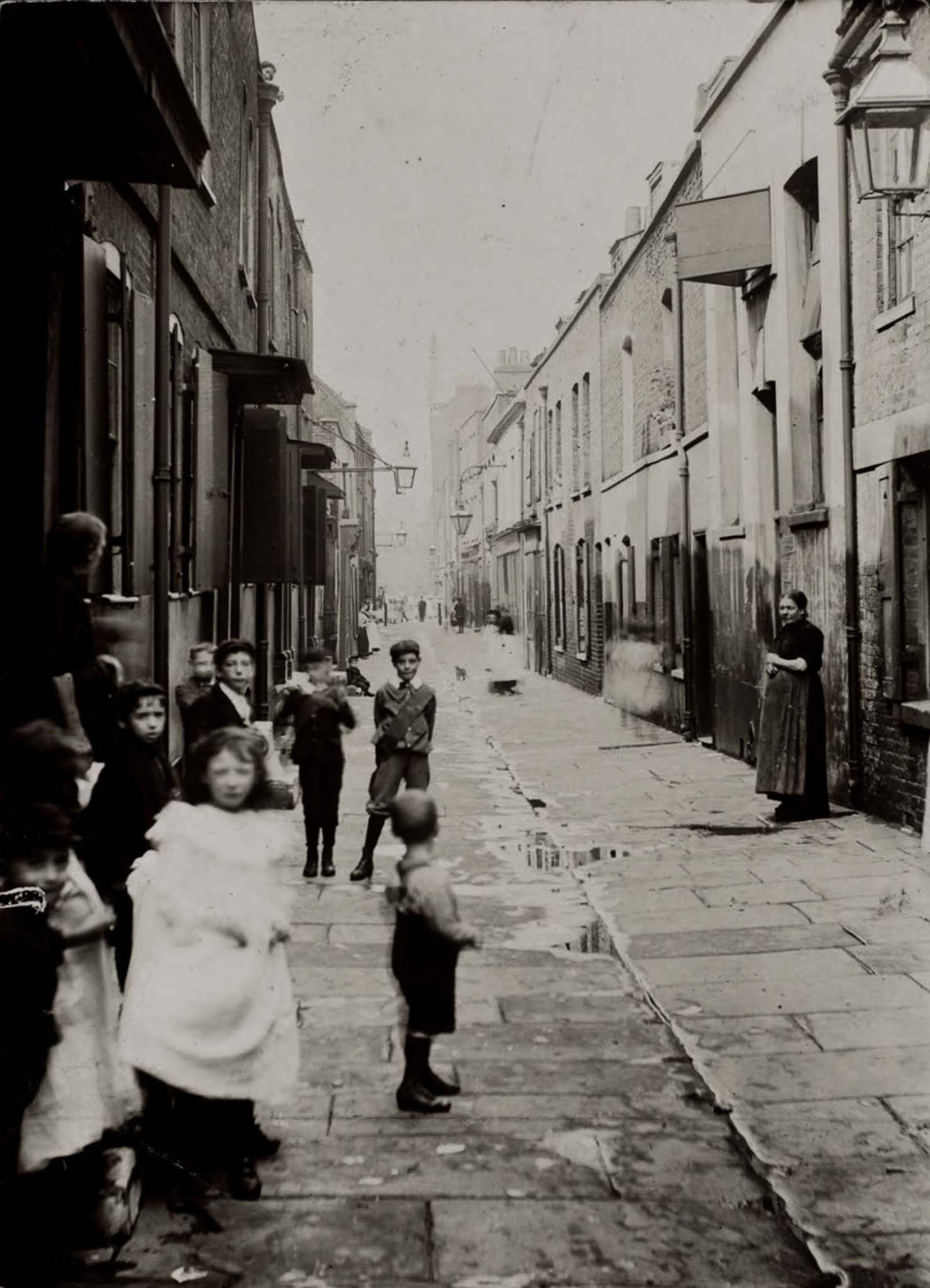
A street view in Wapping.
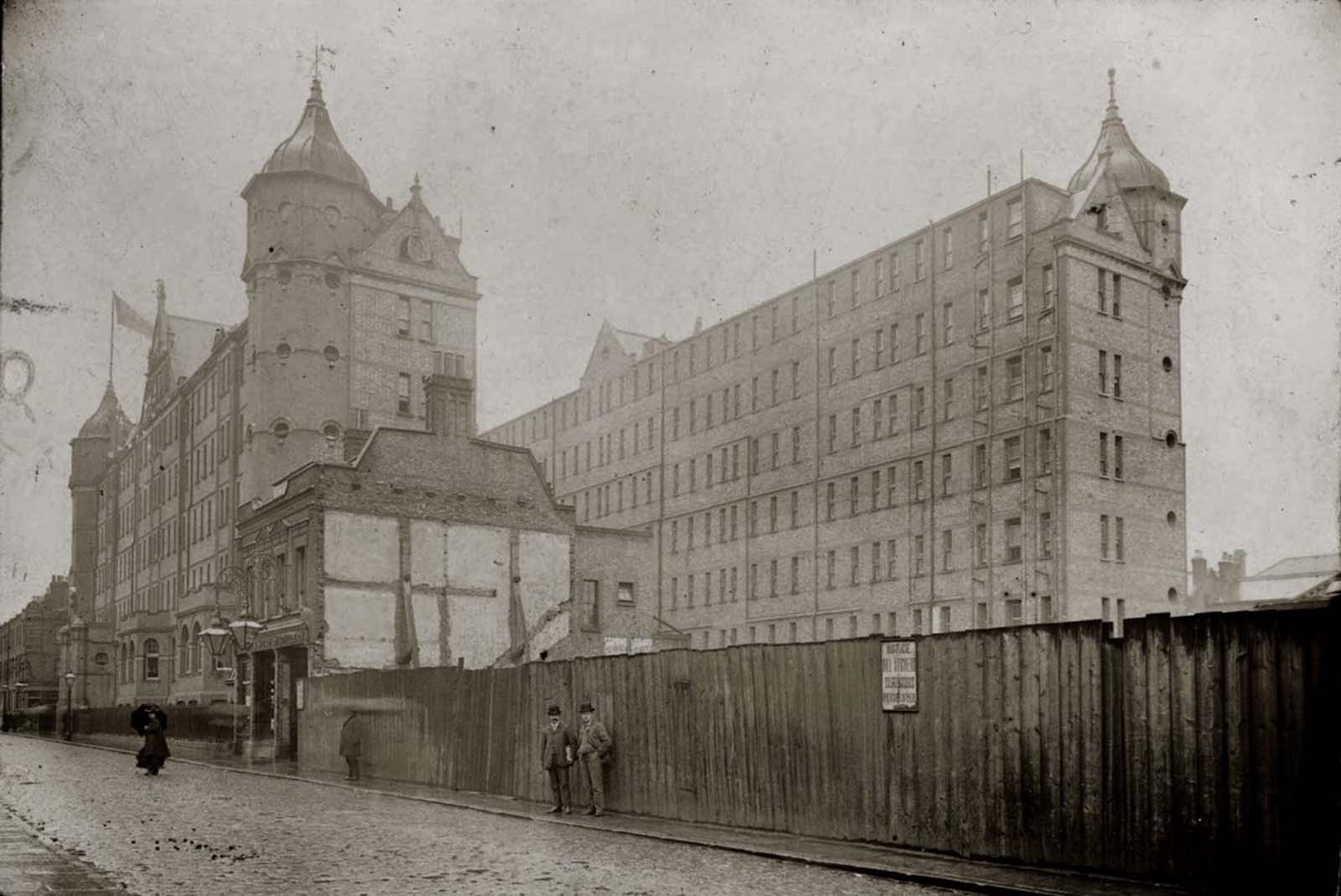
Rowton House, Fieldgate Street, Whitechapel.
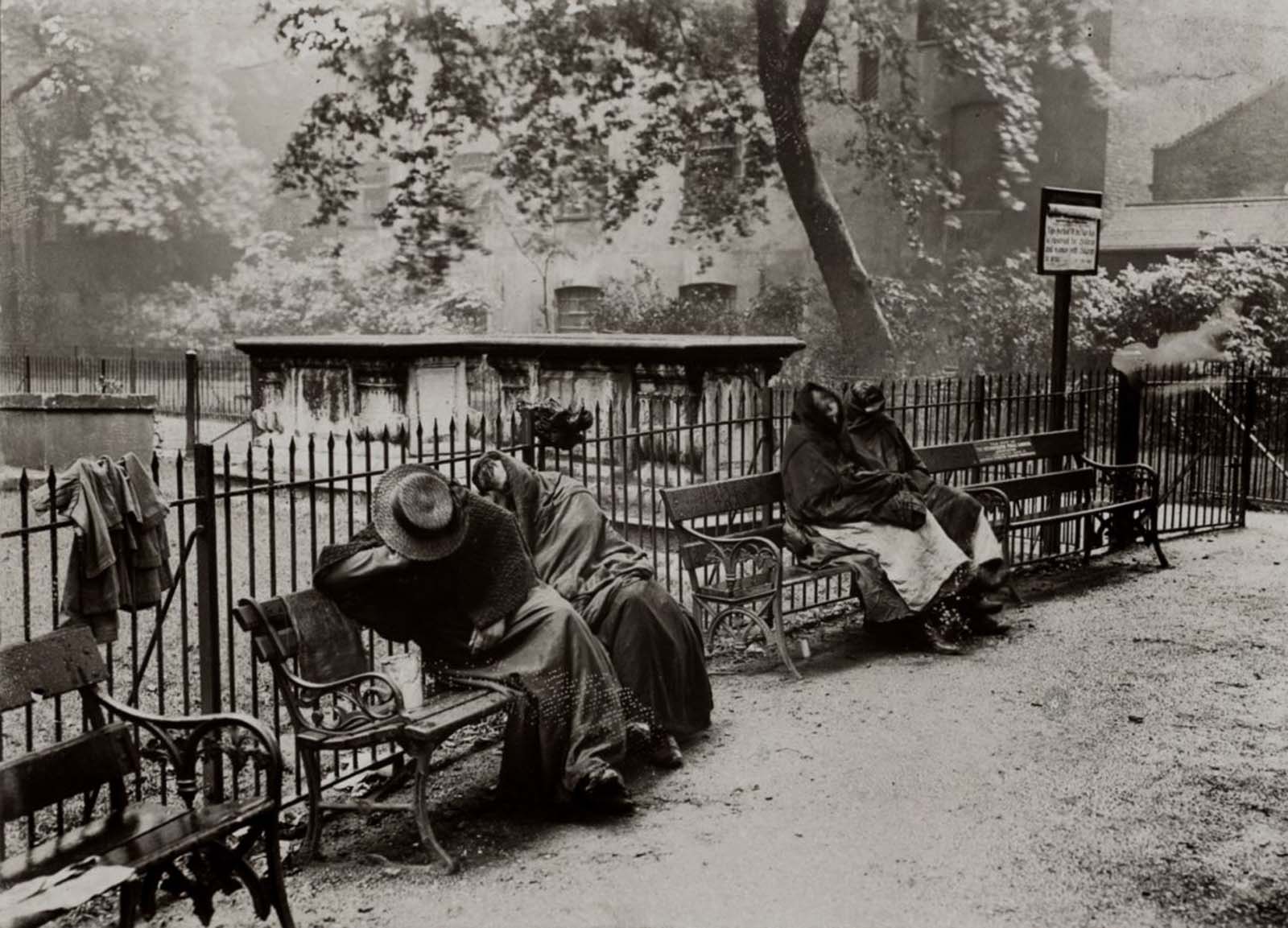
Homeless women in Spitalfields Garden.

“In the shadow of Christ Church, Spitalfields, I saw a sight…”
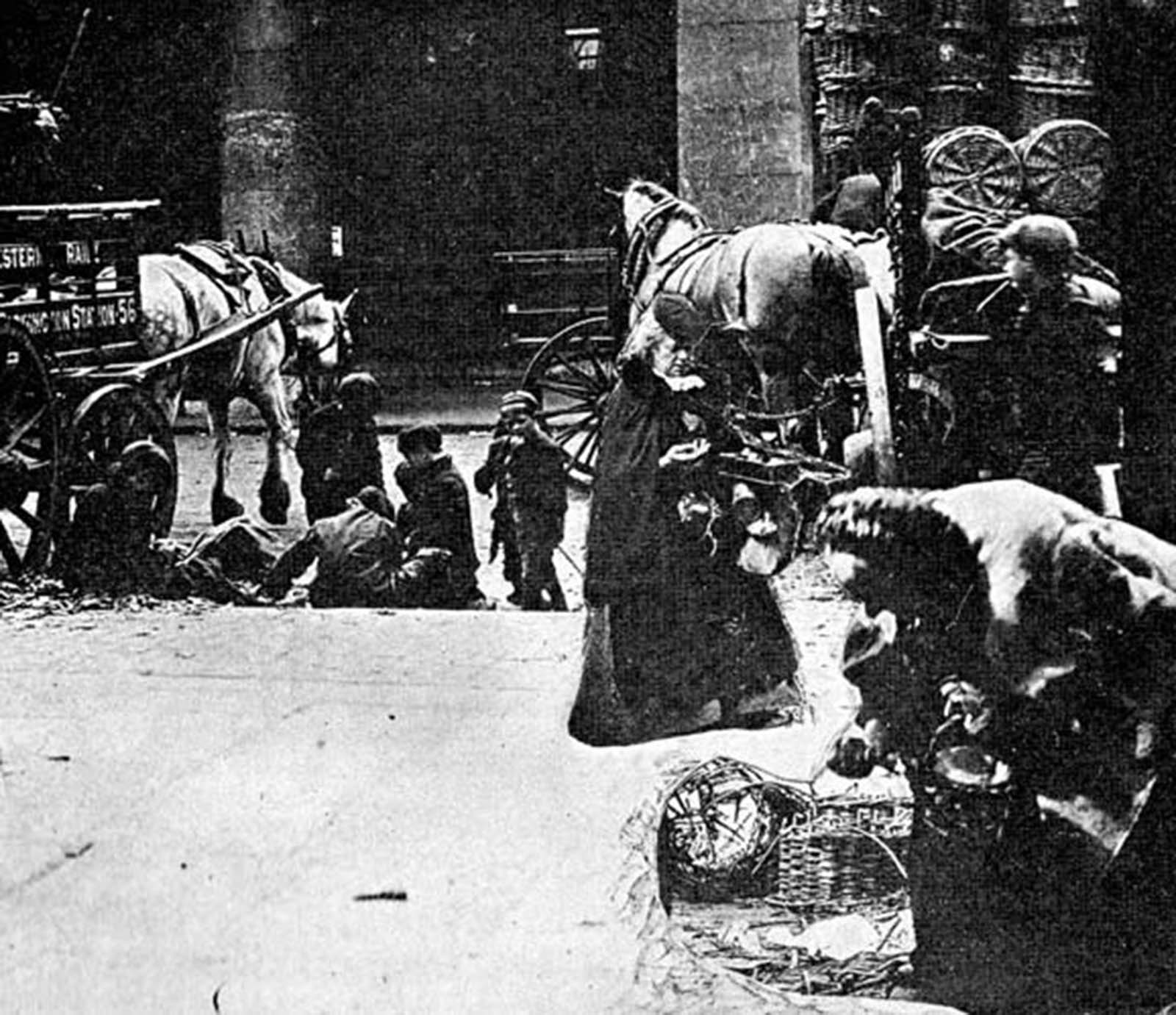
“Tottery old men and women were searching in the garbage thrown in the mud”
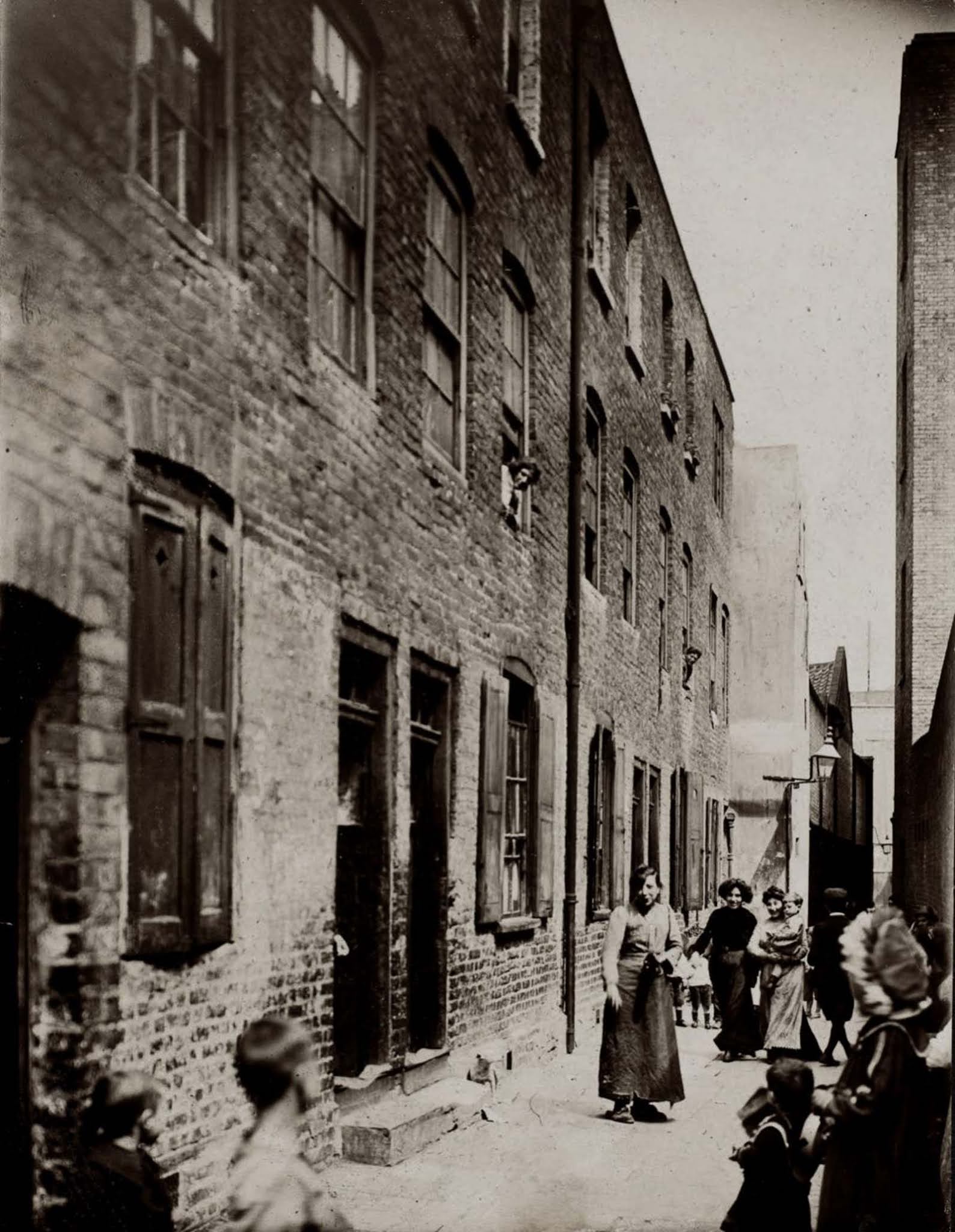
Frying Pan alley, Spitalfields.
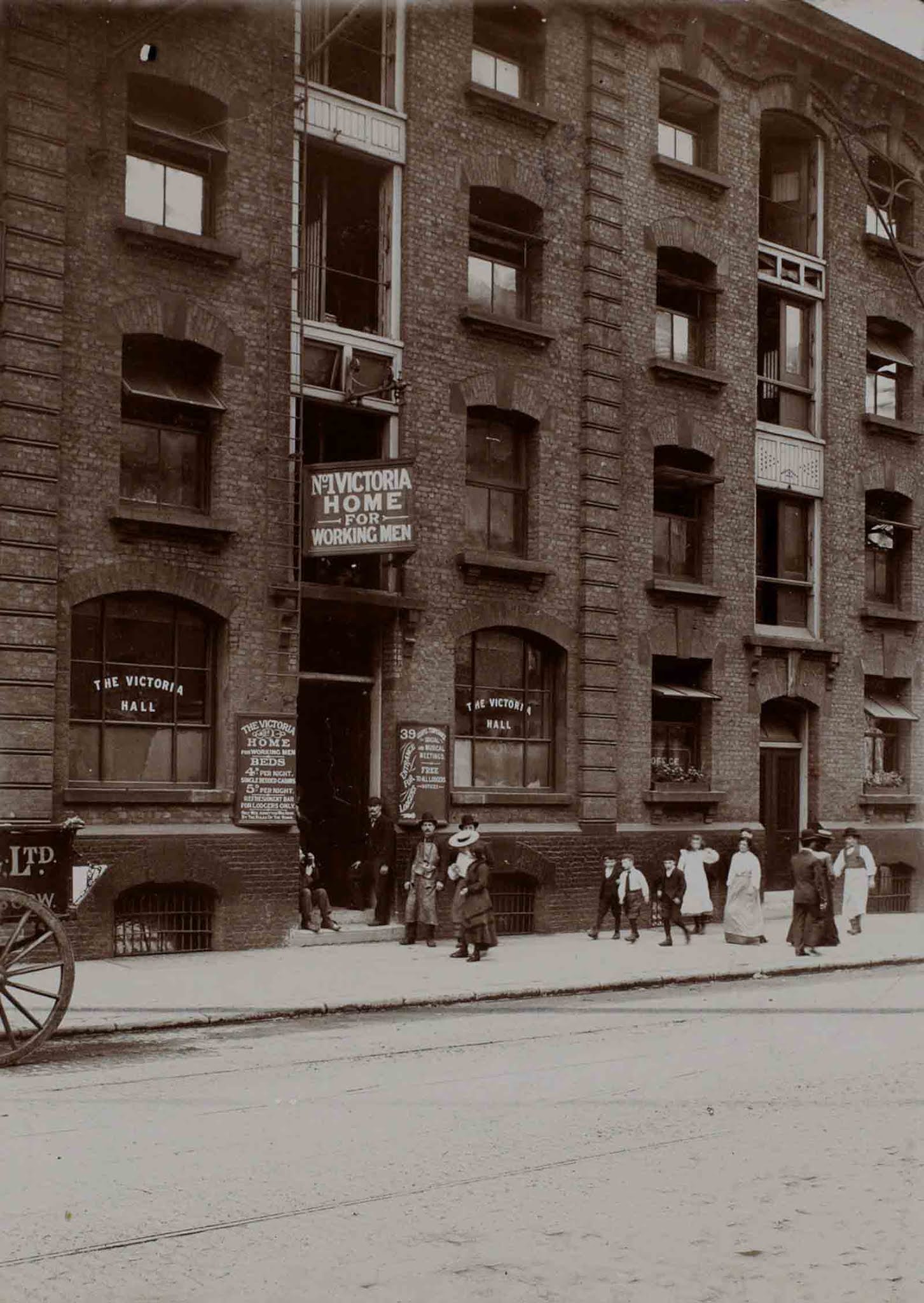
“Victoria Home for Working Men”.
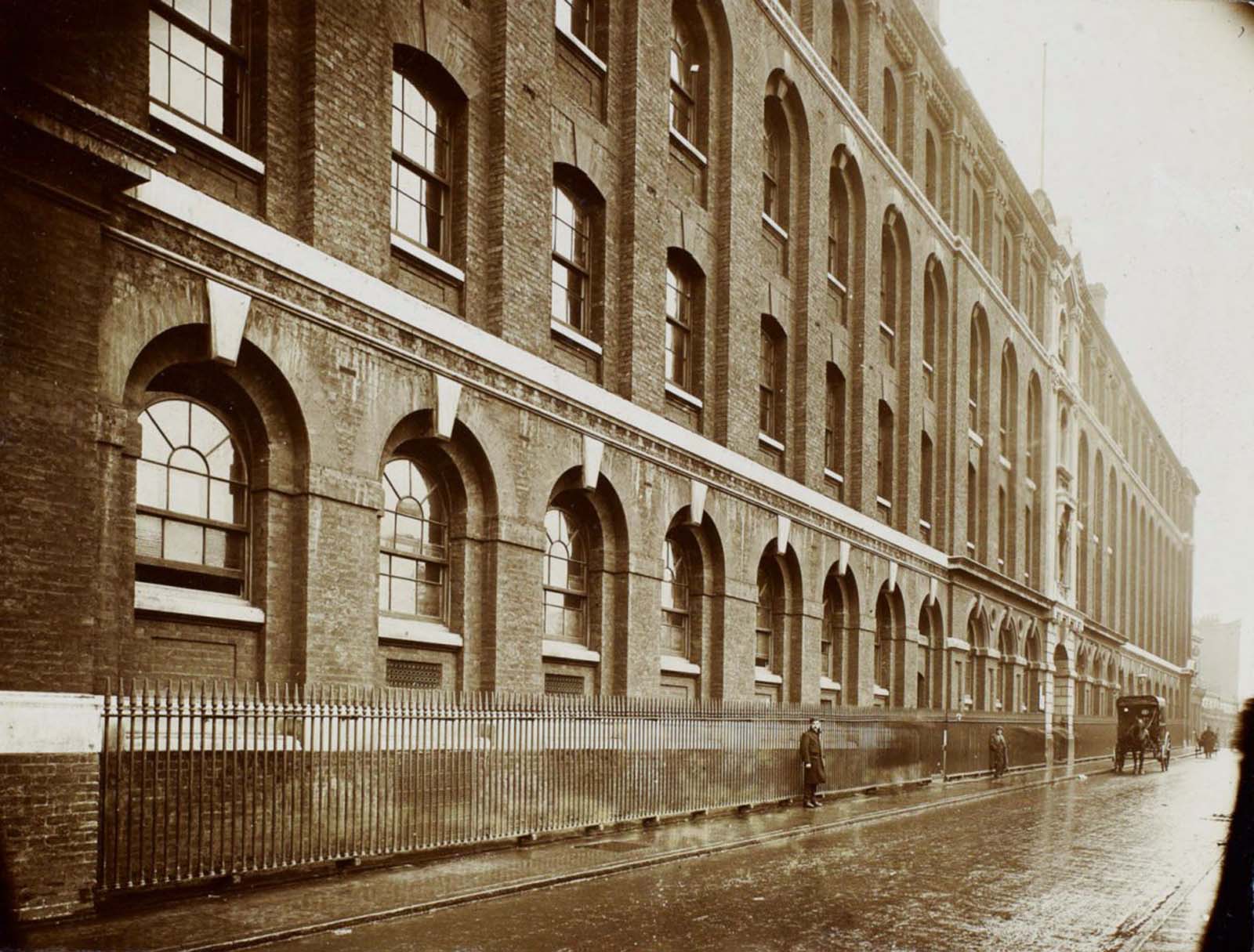
Whitechapel Infirmary. Wide view along the front of a long, four-story building with arched windows on the first floor. Two horse-drawn carriages are on the street in the distance.
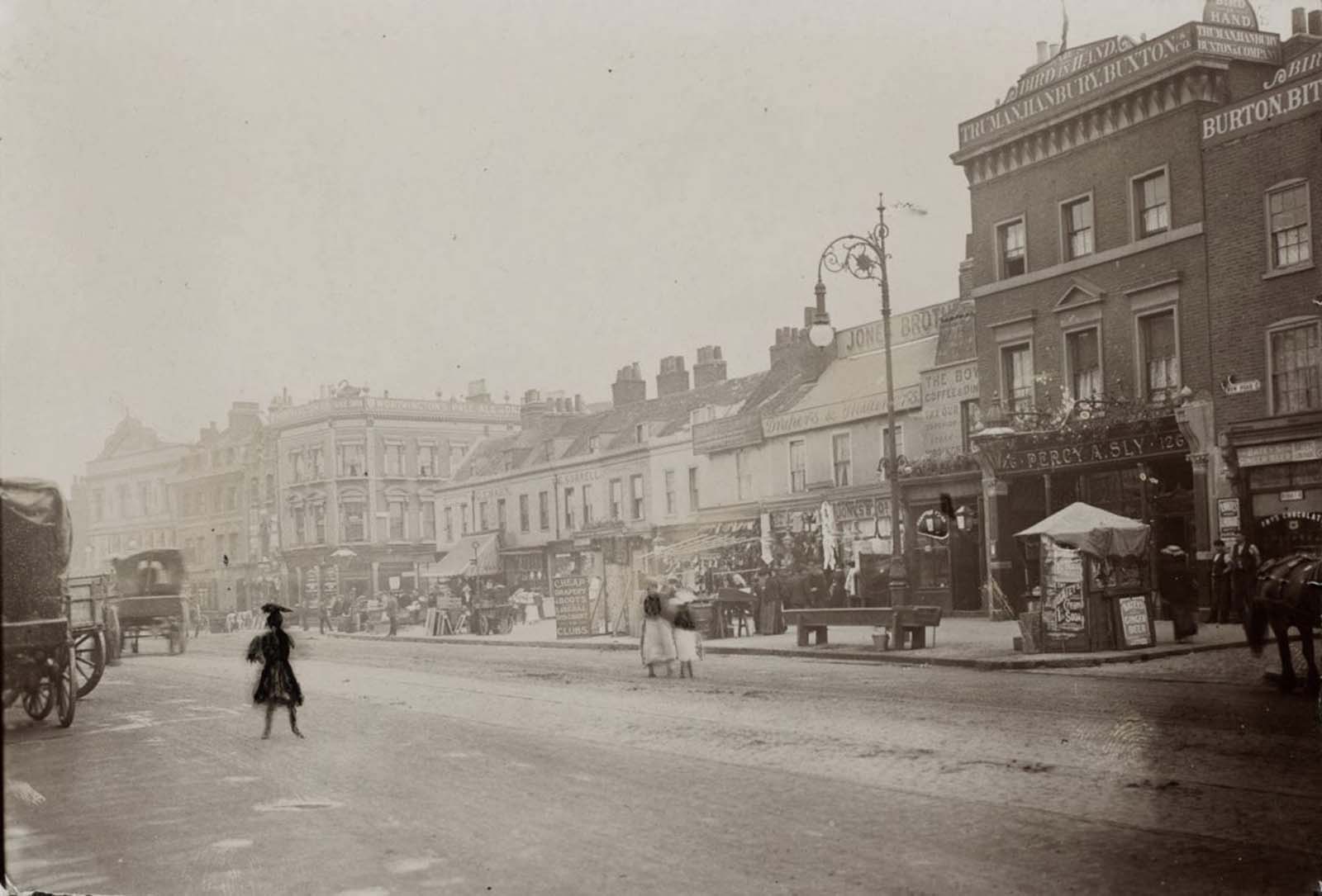
Street view in Stratford.
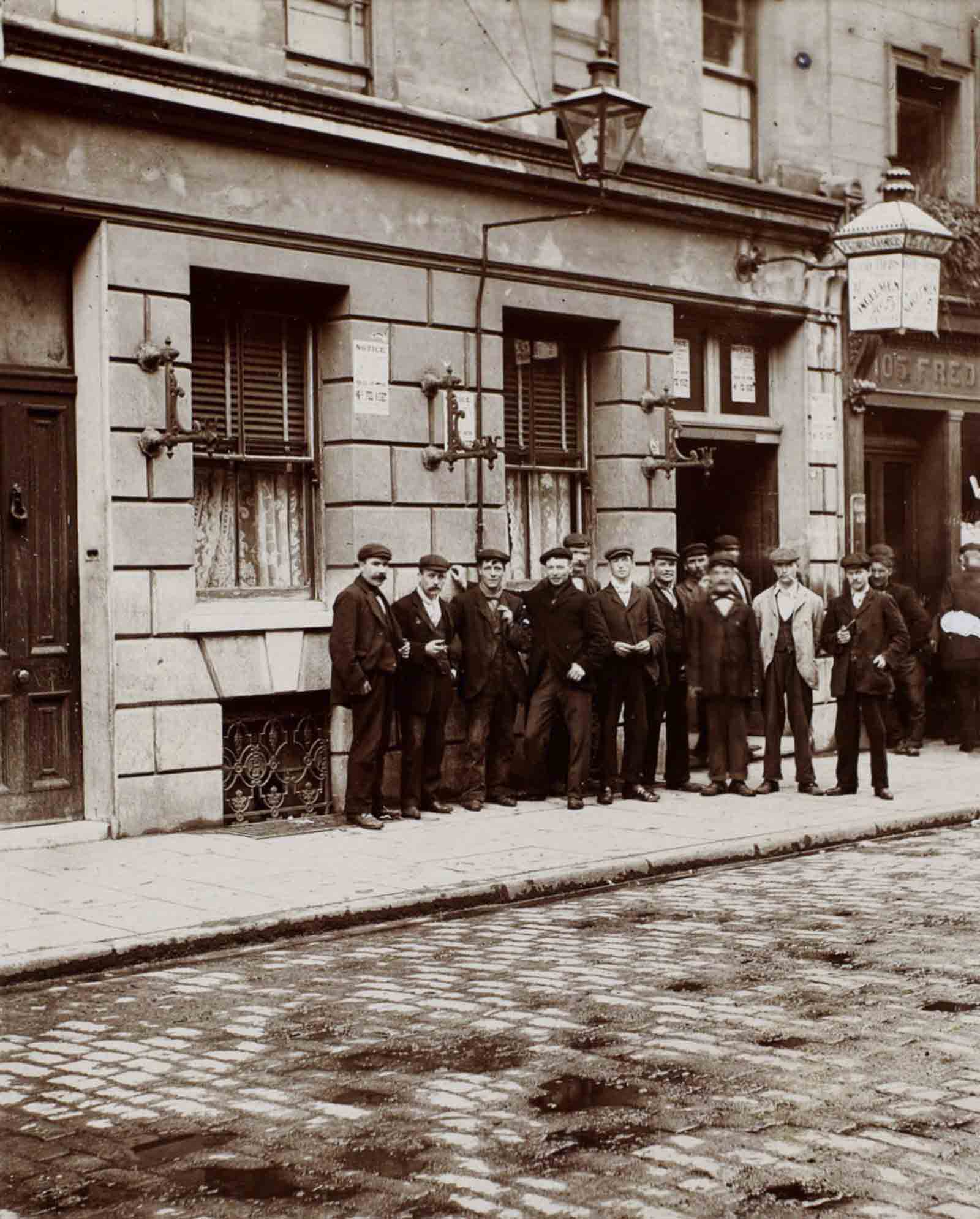
A group of men stading in front of a shelter.
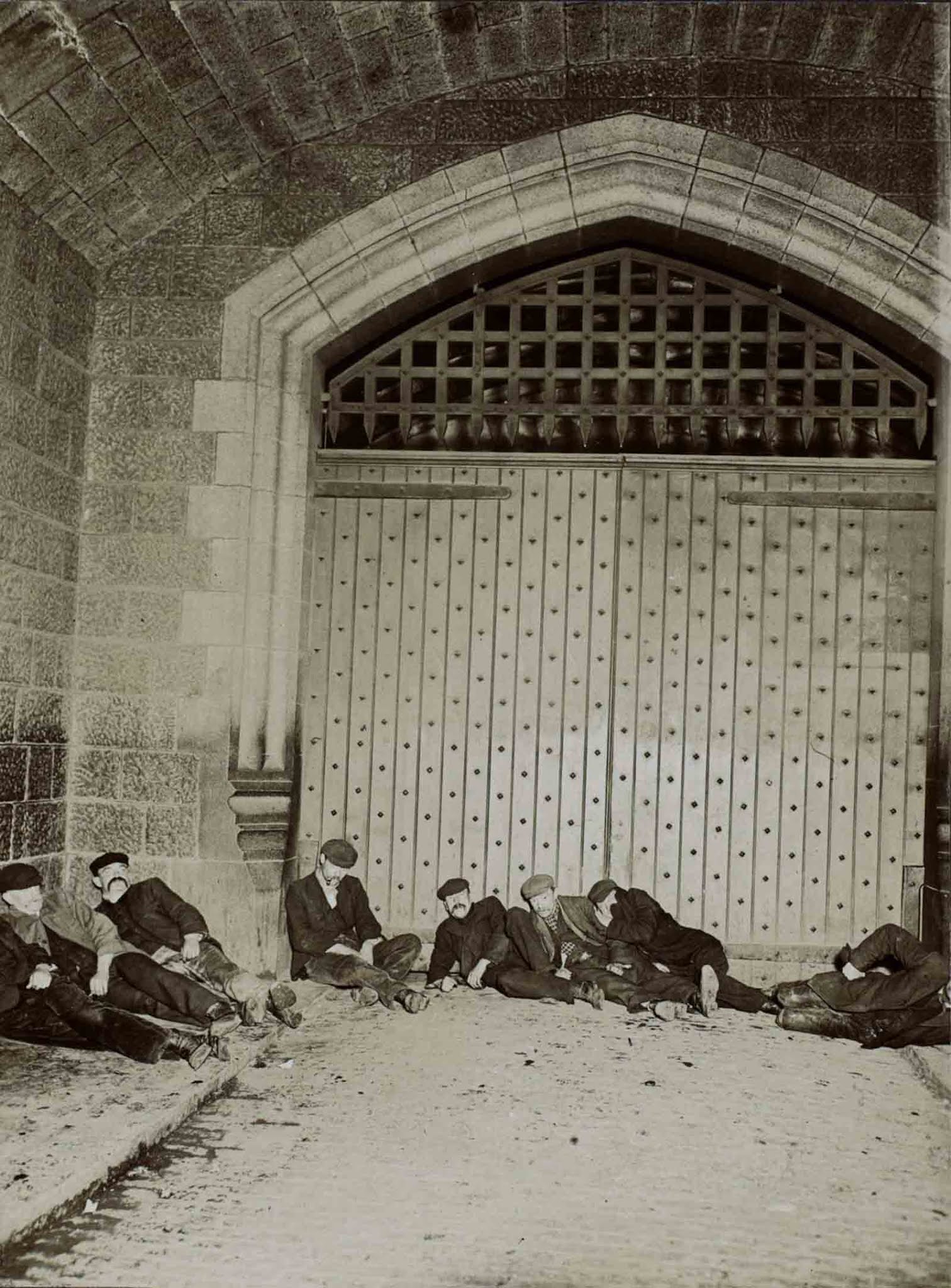
Homeless sleepers under Tower Bridge.
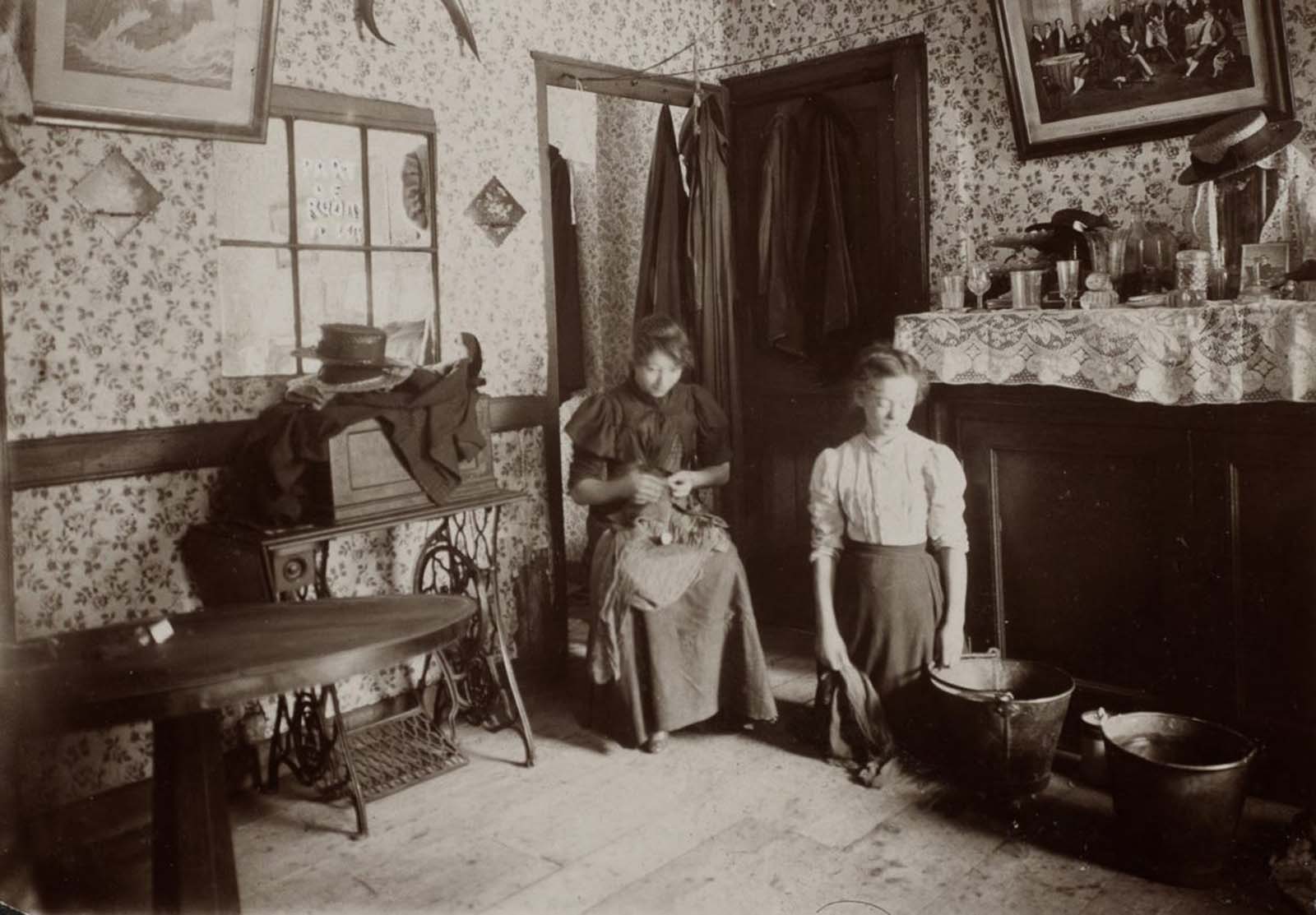
A typical East End home where the people eat, live, and sleep eat all in one room.
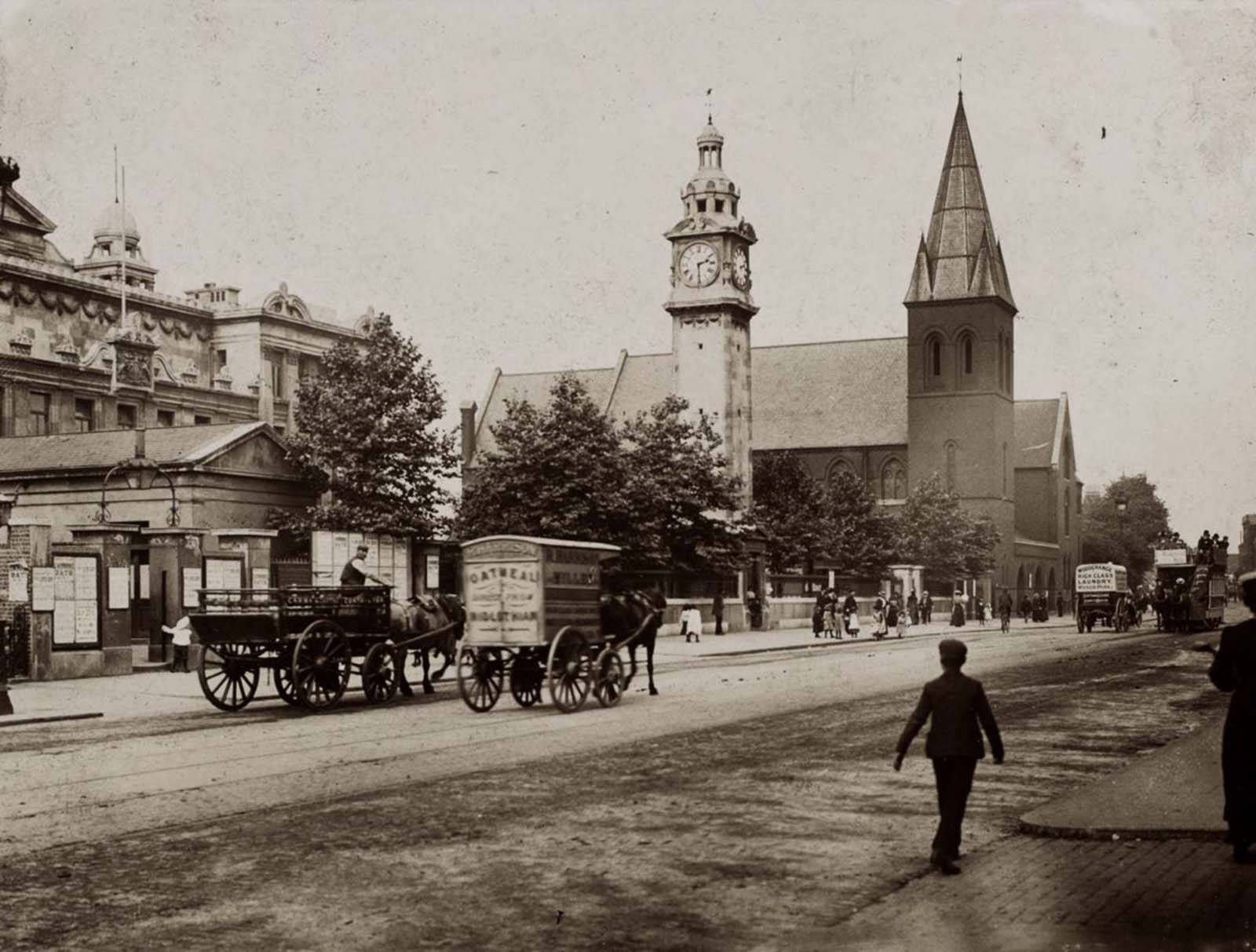
Mile End Road showing the People’s Palace.
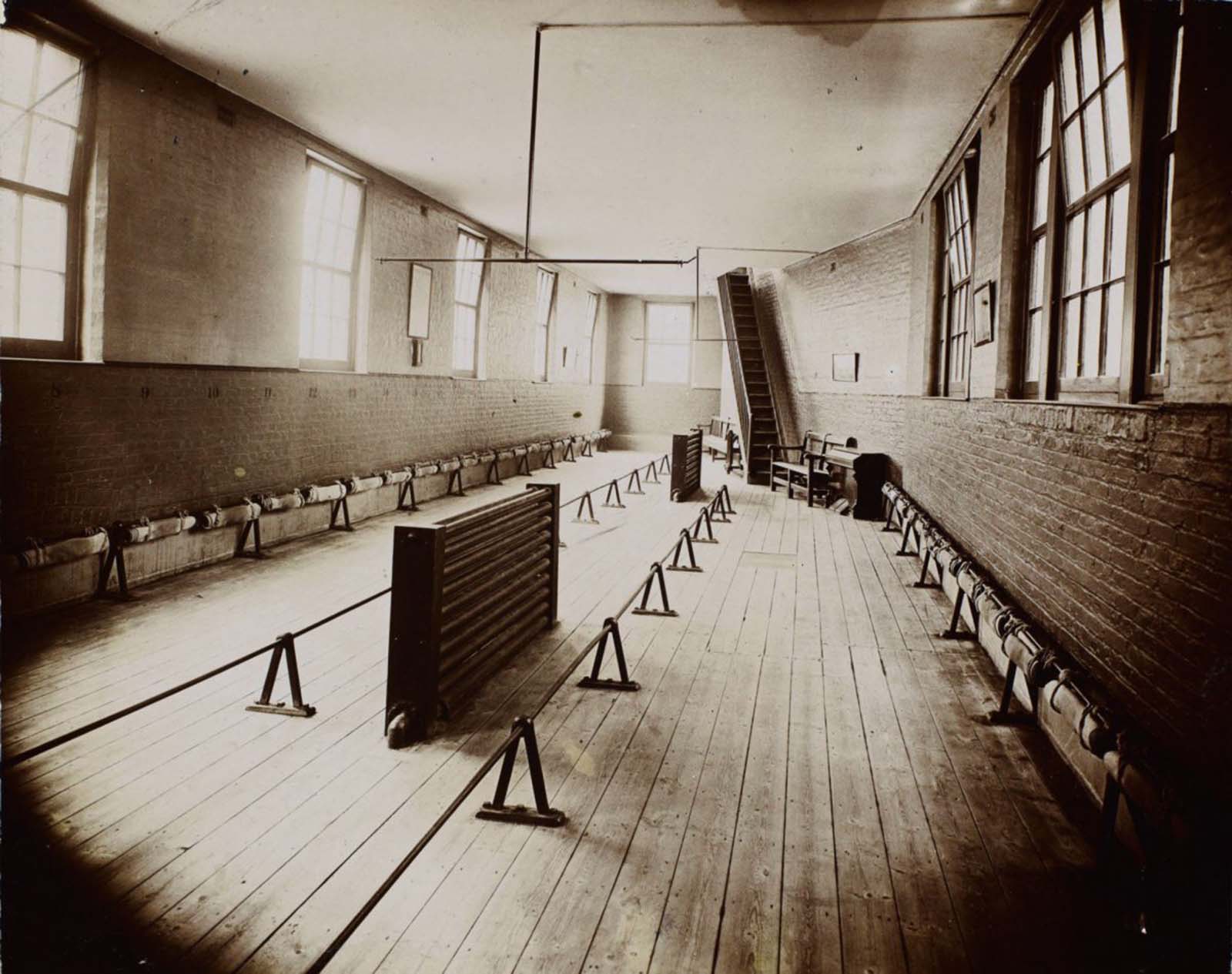
Casual ward of Whitechapel Workhouse.

A street shop where old clothes are sold.
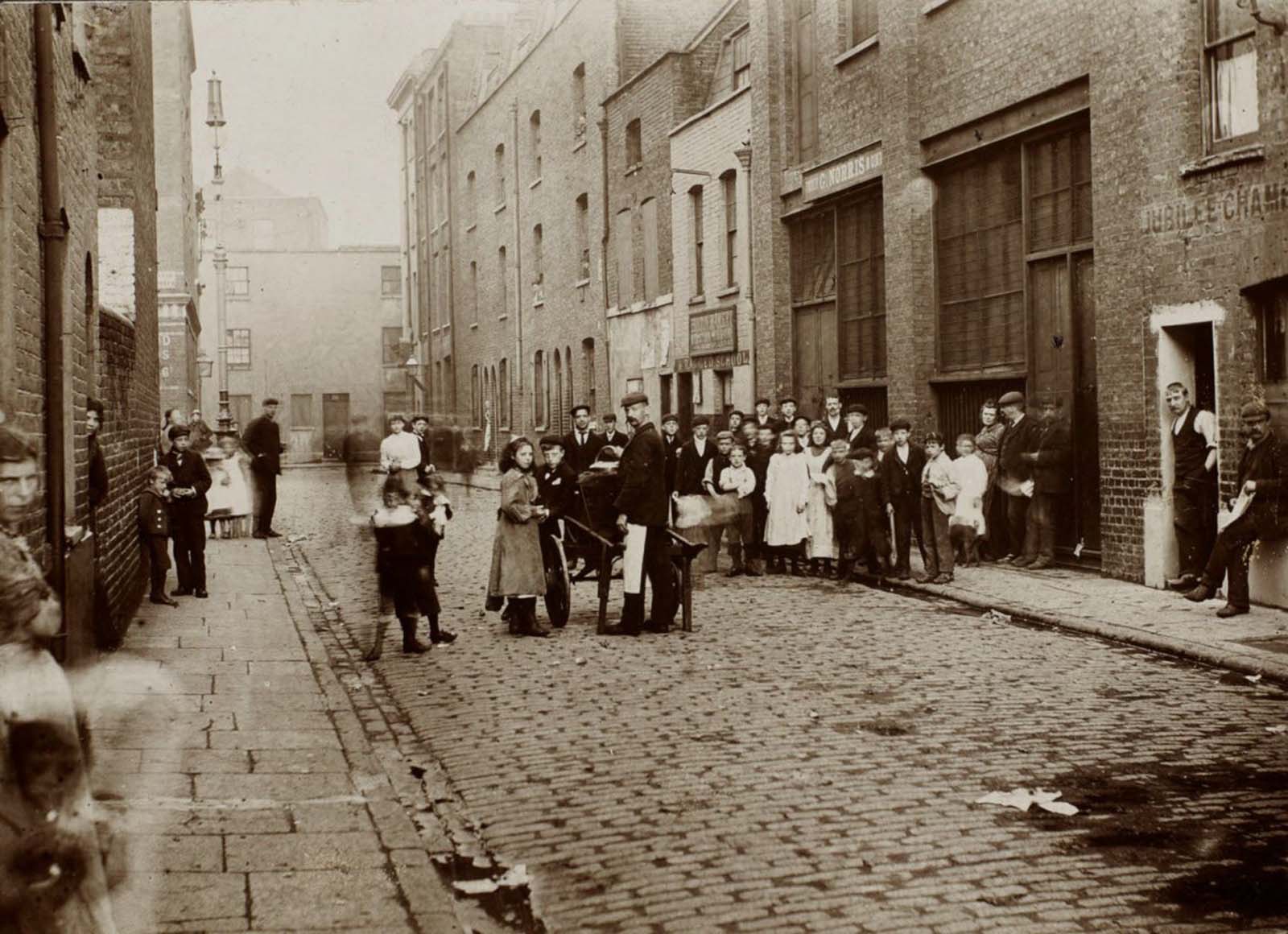
View in Hoxton. 1902.
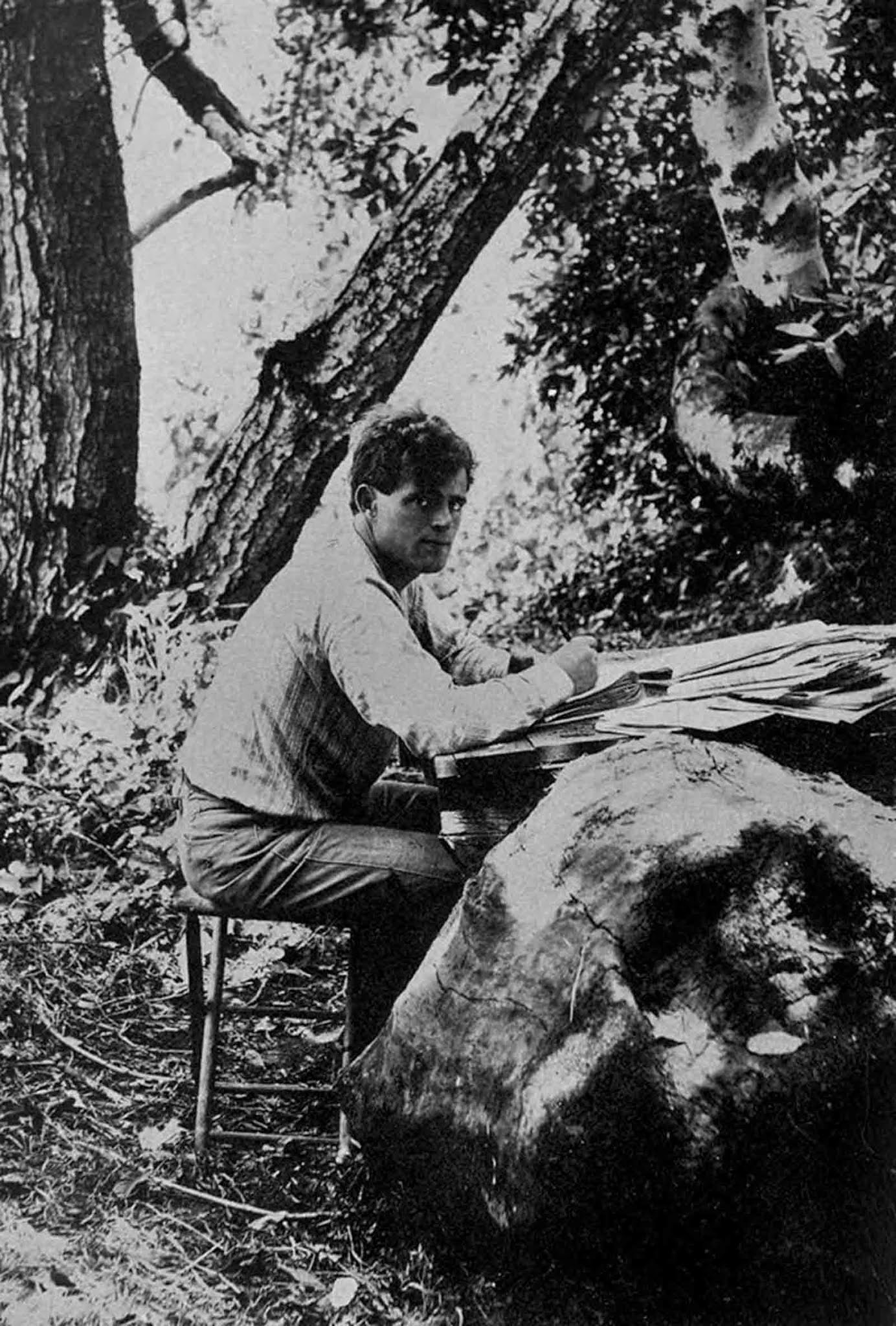
Jack London writing in the outdoors, 1905.
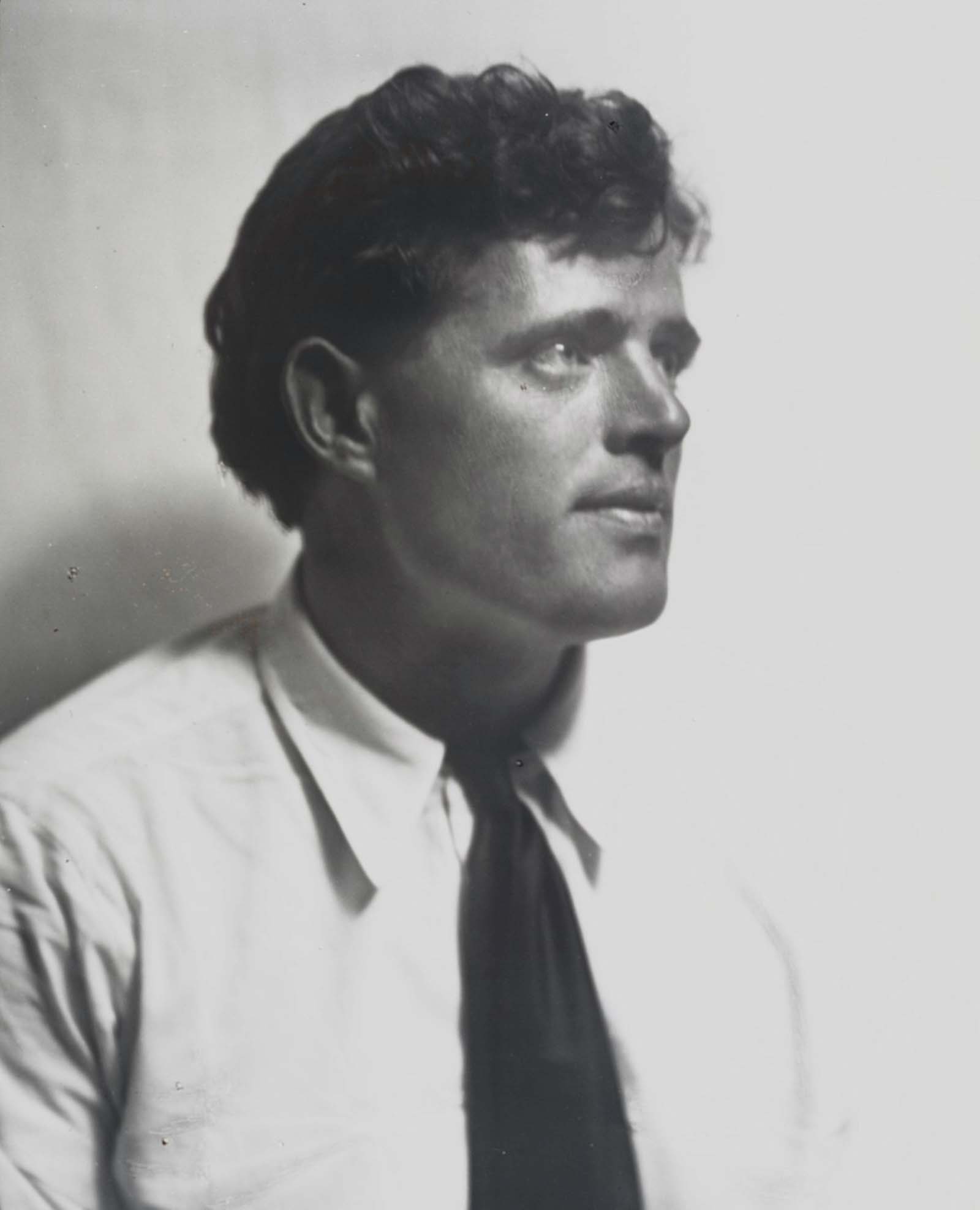
Portrait photograph of Jack London.
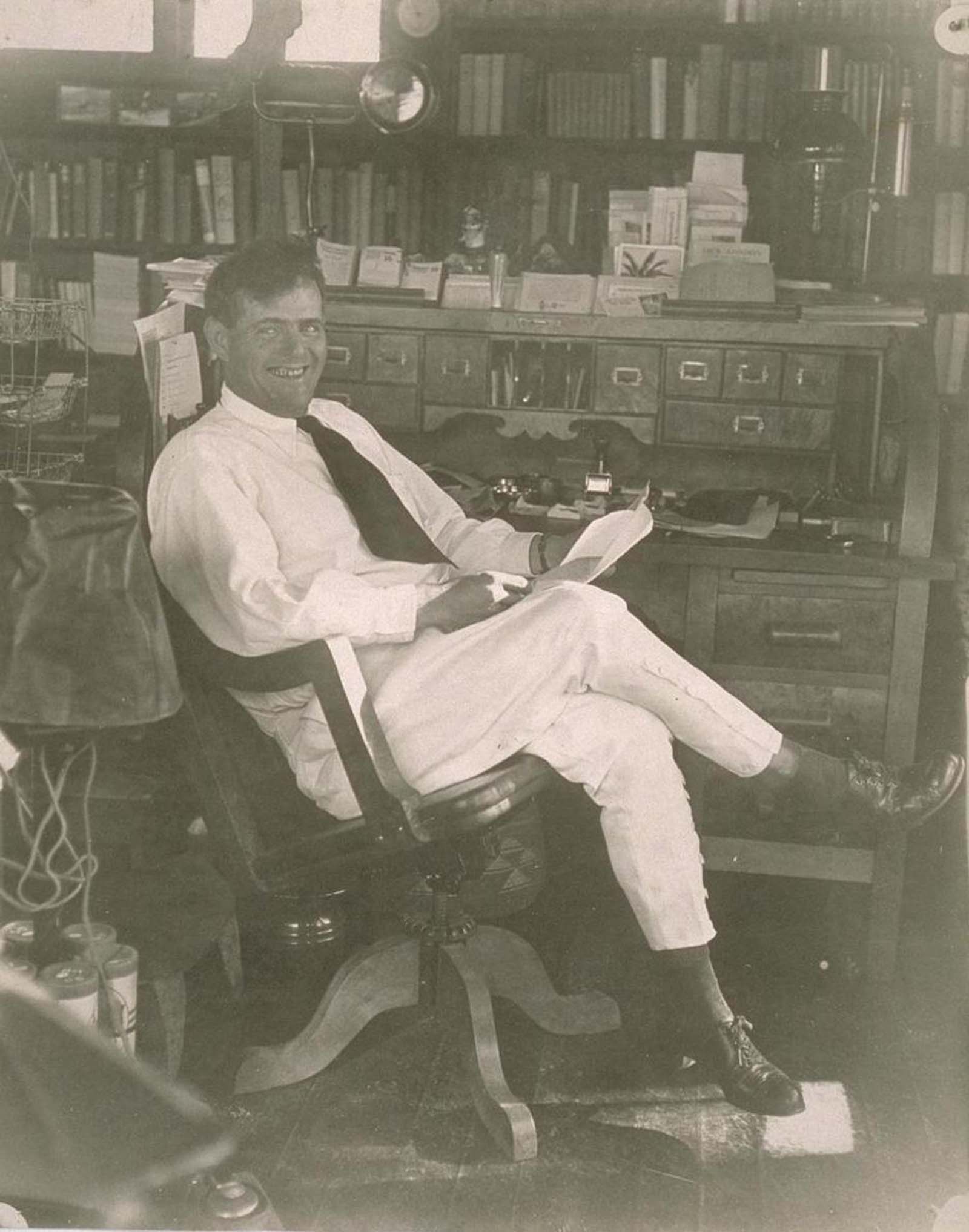
Jack London in his office, 1916.
(Photo credit: Jack London / Henry E. Huntington Library / Spitalfields Life).



